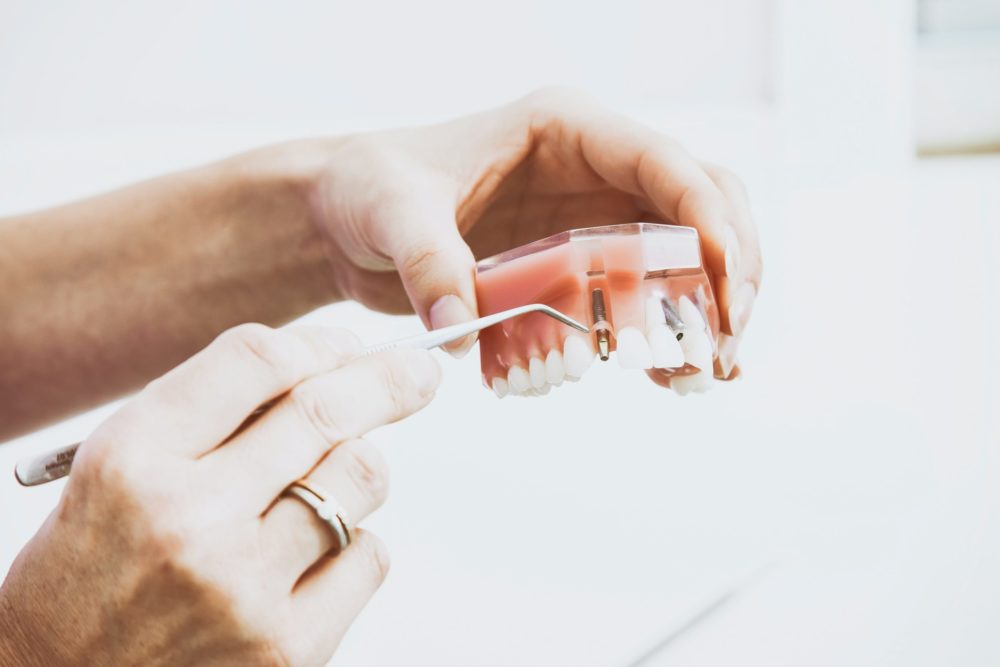
December 20, 2021
What is the Procedure for Dental Implants?
Find out what dental implants are, how many types, when implants are necessary, and what to expect during the procedure.
Has your dentist recommended dental implants, but you’re apprehensive about this process? Did you read our Introduction to Dental Implants but would like more information about this process? In this article, we take a deeper look at when dental implants are necessary, the different types of implants, and what the surgical procedure entails.
Dental implants are metal posts that are surgically inserted into your jawbone to mimic a natural tooth root. These implants are used to fill gaps left by missing teeth. Depending on your needs, a dentist may affix a single crown to an implant, or the implant may be used to support several false teeth.
When do you need dental implants?
While a missing tooth may not seem like a big deal, the gap it leaves can cause your remaining teeth to shift out of place. The bone in your jaw may also shrink or weaken if there is no tooth rooted in it, leading to changes in your facial structure. On top of that, a gap in your smile could affect your speech, your sense of self-confidence, and your ability to chew effectively.
Dental implants can remedy these issues by keeping your teeth in place. They can also be used to secure dentures, preventing them from slipping and causing painful sores in your mouth.
Types of dental implants
There are three main types of dental implants:
- Dental crown supported by an implant: A dental implant is inserted to support a crown, which is essentially a single false tooth.
- Permanent dentures: Implants can be inserted to support a full set of false teeth (dentures). This eliminates the need for removable dentures, which can become displaced easily.
- Dental bridge: A dental bridge replaces several teeth at once, each supported by a dental implant in your jaw.
What to expect
Before dental implant surgery, your surgical team will thoroughly examine you, ensure that you’re in good health, and create a treatment plan. Your medical history will be reviewed in detail to anticipate any potential risks or complications; pre-surgery tests and bloodwork will likely be required as well.
Usually, X-rays, photos, and even models of your jaw and teeth are necessary to pre-plan all aspects of the dental implant procedure.
If the bone in your jaw is weak or contracted, a bone grafting procedure may be required in a separate surgery before the implant can be placed. Once the bone graft is done, there will be a waiting period of several months for new bone to generate.
Surgery timeline and recovery
Dental implant surgery is a long process that occurs in stages. After each stage, the surgical site needs to heal before moving forward with the next phase. In most cases, it takes several months to progress through every stage of dental implant surgery.
Stage 1: Placing a dental implant
During this stage of the dental implant procedure, your oral surgeon will drill a hole in your jawbone and insert a metal post (the implant), which will hold your replacement tooth. Due to the invasive nature of this procedure, a general anaesthetic is typically used during the surgery.
Stage 2: Abutment placement
The abutment is a piece of equipment to which your prosthetic tooth will attach. It inserts into the dental implant and stays in place while your gums heal around the surgical site. The abutment may be placed at the same time as the implant or in a separate surgery. After this stage, a 4–6 week wait will ensure that your gums are fully healed before the prosthetic tooth can be attached.
Stage 3: Placing the tooth
Once your oral surgeon is satisfied that your jaw and gums have healed from the preceding surgeries, they will prepare to place your prosthetic tooth. To ensure the tooth fits properly, molds and impressions of your teeth will be taken to design a prosthetic that looks and feels natural in your mouth. Depending on whether you opt for a removable or fixed tooth, the prosthetic will either be mounted on a removable metal frame on top of the abutment or cemented into your mouth.
After the procedure
The surgical procedures associated with placing a dental implant can result in tenderness, oral sensitivity, and pain. You may have to stick to a diet of soft foods until your sutures heal and can be removed. Your surgeon will likely prescribe pain medication and potentially antibiotics to ensure the surgical site is free of infection.
While the surface wound will likely recover quite quickly, the underlying surgical site in your jawbone could take much longer to heal. There are instances in which dental implants are unsuccessful because the jawbone fails to heal around the implant, but these are rare.
Speak to your surgical team about what to expect and any issues you should look out for.
Dental Implant Results
Placing a dental implant is a long process with many steps, but once the implant is in place, it generally feels and behaves just like a natural tooth. To ensure your dental implant is successful, be sure to brush and floss teeth regularly and confer with your dentist if any signs of trouble emerge.
Are you wondering if a dental implant might be right for you? One of Tuxedo Dental’s implant experts will be happy to discuss your options and answer any questions you may have. Book a consultation and take the next step toward your healthiest smile!